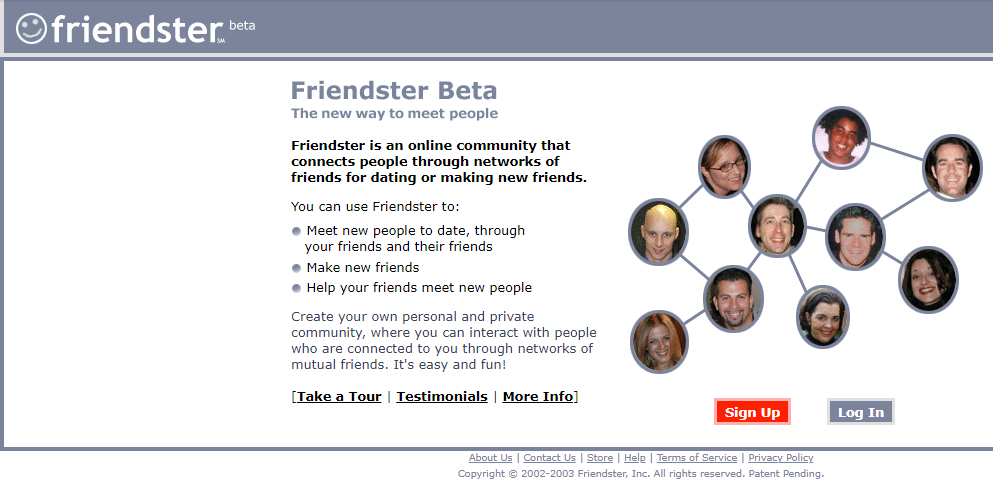Startup Growth : Why Friendster failed and Facebook succeeded
Growth for startups is the ultimate goal. Startup growth can be challenging, but back in the early 2000’s, it was challenging for a whole other reason.
Friendster, is the original major social network. It was the first website that had the functionality of a real social network (based on real names). Friendster is even behind many of the features we see nowadays in Facebook or even LinkedIn. So why Facebook and LinkedIn succeeded while Friendster failed? The answer is too much growth.
Any startup would love to have a strong or exponential growth. There is a marketing discipline specialized in helping deliver growth to startups, called : Growth Hacking. At the time when Friendster launched in 2002-2003, dealing with growth was a major issue.
Friendster, is not the first social network, but it was the first big one. Founded by Canadian computer programmer Jonathan Abrams in 2002 and went live in 2003. Myspace launched later in 2003, Hi5 and Facebook launched in 2004. Eventhough there was competition, it was not really mainly due to competition that Friendster failed.
Big names like Peter Thiel (Paypal CEO – also early investor in Facebook), Reid Hoffman (founder of Linkedin), Tim Koogle (Yahoo CEO), invested in Friendster.
Friendster growth issues
At the time, dealing with growth was not easy, especially if you have a popular site. Friendster got really popular fast, within few month it reached 3 million users. This fast growth meant there was a need for more servers and bandwith, something the company struggled with. They struggled with so much, that they tried to find ways to limit users visiting their site. The reduced member email notifications and suggestions. The website was very slow to load, users waiting 30-40 seconds for the page to load. The growth meant that as soon as they added new servers, they were already lacking behind.
They started removing interesting features, like connection graph, just to reduce the server load.
Money was not the issue, they had raised a total of $48.5 million across five rounds of venture capital funding. Instead of focusing on finding a solution to the technical issues, the startup kept changing CEO, they changed 6 CEOs in 7 years.
In a New York Times article, Jeff Winner, the firm’s former Head of Engineering, talked about working under three different CEOs in a span of 12 months:
“After a while all the changes really wear on you,” he said. “Every C.E.O. represented a change of direction, and when a company changes direction, the engineers really get jerked around.”
Friendster saw problems whenever they had growth. At the later stage, they started growing fast in the Philippines. The company saw this as an issue, instead of finding a positive solution that would prevent drowning their user-base by a bigger Filipino user-base, they started again thinking of ways to limit reach.
Finally Friendster was able to clean it’s act, the service was fast, but too late, most users already moved to another site. The site which invented the early version of newsfeed (now used by Facebook) and who visited my profile (used by linkedin), sold to a malysian company for $40 million. The malysian company later made some good profit selling Friendster patents to Facebook.
Myspace defeats Friendster, while Facebook controls growth
During the friendster messy years, Myspace, was able to take their user base. Myspace was launched by an already big tech company formerly known as eUniverse. Myspace gave users more freedom to customize their pages, and was way faster to load. Furthermore, they are believed to have been behind the creation of many fake profiles on friendster asking members to join Myspace instead.
During the time Myspace was taking friendster’s users, another website was slowly growing, yes, it is Facebook. Facebook, unlike friendster decided to manage and value growth, by growing one university at a time. For Facebook the growth was under control, each time they wanted to launch in new university they had the new servers ready. They knew their target audience and what to expect.
Facebook was like friendster, clean and classy, unlike the messy myspace, that allowed more expression but made the site a visual pollution. Believe me, i know what i am talking about … In the 2006 i had a website dedicated to the myspace customization, and the users customized everything sometimes to an annoying level. Myspace suffered also from the general public expectations from social media and it’s moderation power. These days we talk about fake news on Facebook, for Myspace it was more about impersonation and safety. And last, in Myspace last days, the company suffered from a lot of spam, tool bots were created to take advantage of the site and allow marketers to spam users. NewsCorp which acquired Myspace for $580 million in 2005, sold it to Specific Media for $35 million.
When Facebook had strong financial backing and a robust infrastructure, they decided to open their doors locally to none university students, and then started deploying internationally.
To sum it up, Friendster was afraid of growth, while Facebook embraced it and made sure to be prepared for it.









